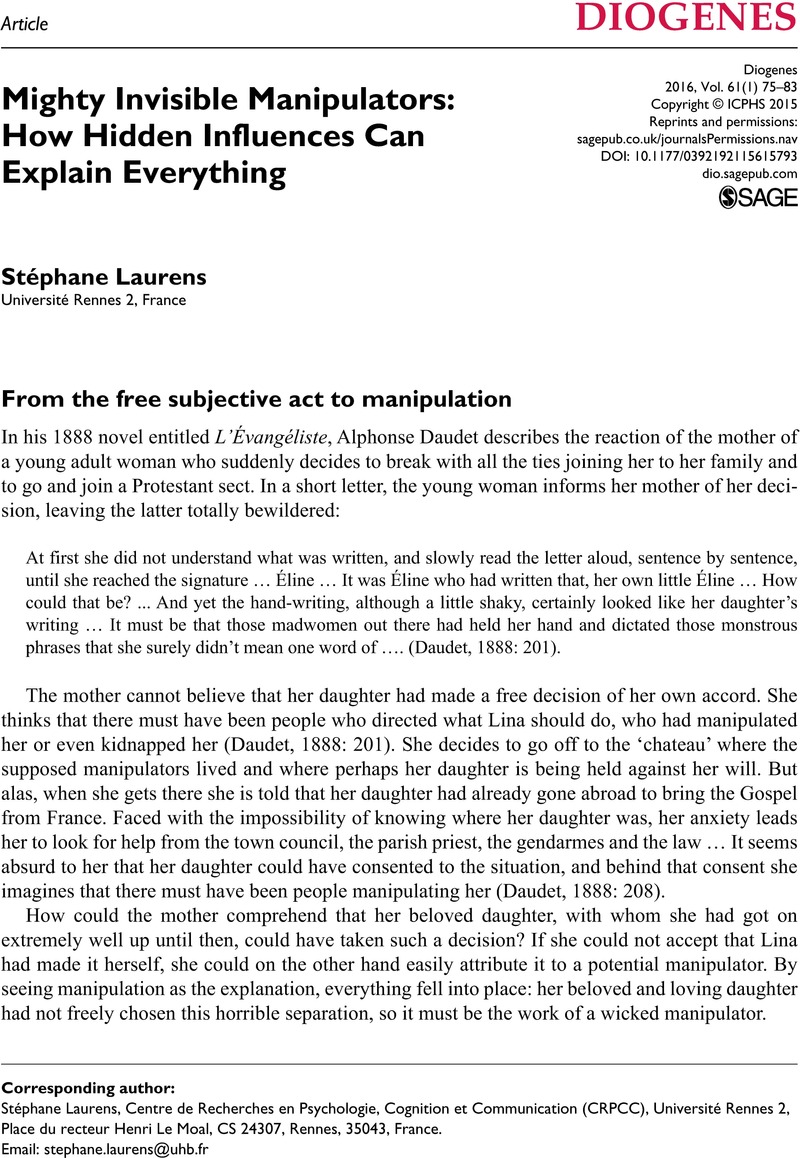Crossref Citations
This article has been cited by the following publications. This list is generated based on data provided by Crossref.
Laurens, Stéphane
Hanzo, Floriane
and
Morchain, Pascal
2016.
A Research Note on Delegation of Responsibility in the Observation of a Situation of Obedience to Authority.
Imagination, Cognition and Personality,
Vol. 36,
Issue. 2,
p.
116.
Ballot, Mickael
Niang, Anta
Laurens, Stéphane
and
Testé, Benoit
2021.
“He was brainwashed!” Criminal complicity and sentencing in France: interpreting a “crime committed under influence”.
Journal of Criminal Psychology,
Vol. 11,
Issue. 1,
p.
30.


